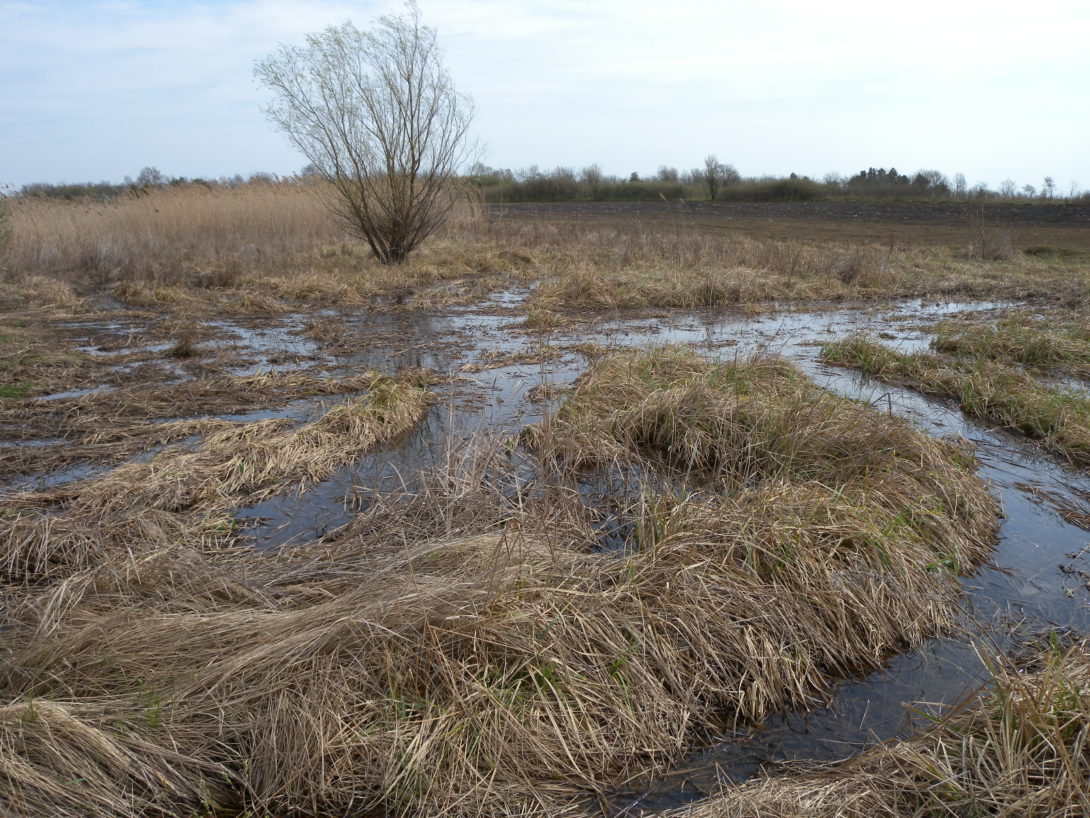Early Copper Age Villages
What Happened at the End of the Neolithic? Heading link

Between 2000 and 2007, the Körös Regional Archaeological Project investigated the dramatic social, political, and economic transformations that occurred within the early farming villages of the Körös Region during the transition from the Neolithic to the Copper Age on the Great Hungarian Plain, about 4,500 BC.
Nearly a thousand years after the first farmers arrived in the region, the final phase of the Neolithic in the northern Balkans and the eastern Carpathian Basin was characterized by settlement systems centered around nucleated tell sites (settlement mounds). By the end of the Neolithic, the vast majority of tells were abandoned and the clustered settlement pattern of the Neolithic gave way to a dispersed pattern in the Copper Age with more small settlements distributed evenly across the landscape. This shift in settlement organization and distribution coincided with profound changes in burial traditions, trade relations, and material culture, suggesting a radical reorganization of social networks and community relations.
Prior to our research in the early 2000’s, several Early Copper Age Tiszapolgár culture cemeteries from the Carpathian Basin had been excavated and studied, including the Copper Age ‘type-site’ at Tiszapolgár-Basatanya, but no Early Copper Age settlements had been excavated systematically. Our research was designed to fill this gap by collecting information from Early Copper Age villages to understand the dramatic sociocultural changes that occurred at the end of the Neolithic in the Körös Region.
We conducted multi-disciplinary studies at a number of Tiszapolgár sites in the eastern Körös Region. Our research included systematic excavations at the Early Copper Age Tiszapolgár sites of Vésztő-Bikeri and Körösladány-Bikeri, as well as intensive geophysical, and geochemical research at these and other nearby Early Copper Age settlements, including Okány-Futás and Vésztő-Mágor.
A centerpiece of this project were several grants from the National Science Foundation’s Research Experience for Undergraduates Sites Program, which permitted us to train dozens of American undergraduate students in the multi-disciplinary scientific methods employed on archaeological projects. We also received funding in the form of a US-Hungarian Collaborative Grant that was co-funded by the National Science Foundation in the United States and the National Science Programs in Hungary. Other funding came from the Wenner-Gren Foundation for Anthropological Research, the Farley Zuber Research Foundation, Florida State University, and private donors.
Our research at these Early Copper Age Tiszapolgár settlement sites changed our understanding of what happened at the end of the Neolithic in the Carpathian Basin. Previous models hypothesized that Neolithic farmers began to specialize in cattle husbandry during the Copper Age, but our excavations demonstrated that people in the Copper Age of the Körös Region continued the mixed economic traditions of the Neolithic period with a mixed reliance upon different domestic animals, including cattle, pig, sheep, and goat. Scholars also thought that Copper Age villages were ephemeral and short-lived, but our excavations at the Bikeri sites revealed neighboring Copper Age villages with extensive fortifications that were occupied for several generations, with overlapping sequences.
We have published several articles and book chapters about our research into the Early Copper Age of the Körös Region, and Attila’s dissertation discusses the results of our research extensively. We currently are working on the revisions of an edited monograph that will be published by the Cotsen Institute of Archaeology at UCLA.